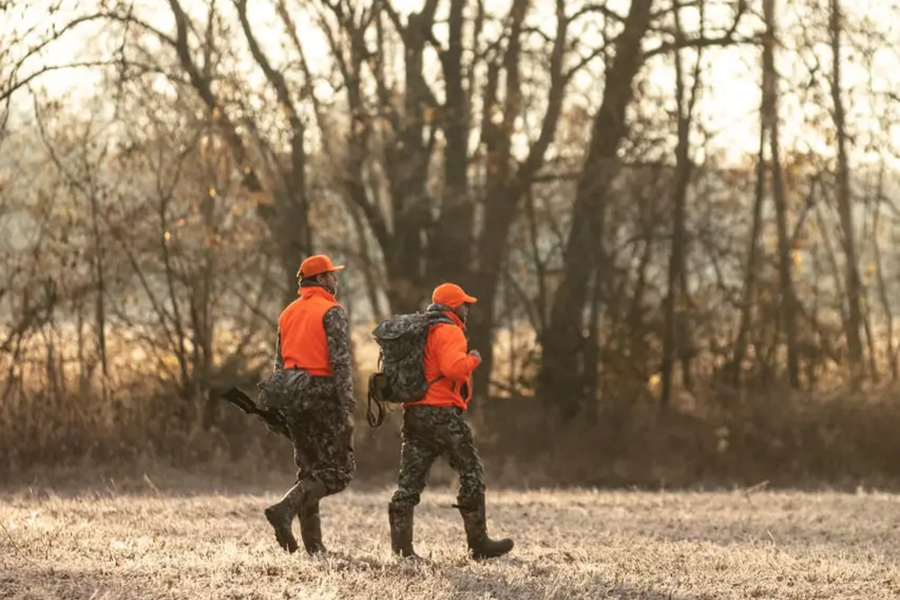Top Safety Tips for Deer Hunting Public Land
Posted by Ted Marks on November 1, 2024, 10:52 am
These safety tips for deer hunting public land will help keep the experience memorable for you and your family.
Deer hunting on public land is a rewarding challenge. Every season hunters flock to state and federal lands in the hope of bagging a trophy deer. There are excellent articles about scouting, what broadheads to use, and even how to figure out the best days of the season to hunt.
All these articles are fantastic resources to help your chances of success. For this blog, however, we are going to offer advice on how to keep things from going wrong. Below are the top tips and suggestions for staying safe while hunting.
Tell Someone Where You’re Hunting
Let someone know where you’re hunting. will be. Hard as it may be to let someone know the area that might be your honey hole, it's a lot safer to allow that information to slide than have rescuers not knowing where to look. Far too many hunters have been lost in the woods because no one knew where to look.
Tell a designated someone what time you will be back. That includes within cell range if service is spotty. Have a contingency plan in place should you not return or call within so many hours of the designated time.

Even if you meet a stranger at the trailhead, let them know where you’re heading. A simple reference could stop a blown stalk, an accidental shooting, or help authorities locate you in the event something happens.
Dress to Hunt
We’re not talking about the newest camouflage. Rather, dressing for the weather. Avoid cotton as it will hold moisture and can lead to hypothermia if the temperature drops. Wool and other sweat-wicking fabrics are ideal, especially if you plan on hiking into a spot. Dress for activity but pack warmer layers for when you stop at your stand.
Wear your blaze orange. While states vary with the required amount of orange (or pink in some states), a flagging vest is an excellent addition to your hunting pack. These bright orange vests worn by road crews fulfill the 500-square-inch rule that many states require. Plus, they take up almost no space. Having a spare one also allows you to drape it over your deer when packing out.

Follow the Rules of Gun Safety
Treat every firearm as though it is loaded. Tragedies happen when people assume guns are empty. Make sure your gun is empty before hauling it into the stand, strapping it to your ATV, or picking it back up.
This also means keeping your finger off the trigger until you’re ready to fire. While stalking deer, walk with your gun pointed in a safe direction with your finger off the trigger. This way the chances of a mishap due to stumbling or falling are greatly reduced.
Verify your target. Ideally, you won't shouldn’t raise your gun or come to draw until you have confirmed that the movement behind the brush is indeed a shootable deer. Buck fever is real. exists, And every year non-legal animals from spikes to livestock are shot. Shoot only when you’re absolutely sure of your target.
Stay Hydrated
Dehydration can cause a series of negative side effects from headaches and muscle cramps to confusion and heatstroke. What’s hard to recognize is that dehydration happens in the cold as well as the heat because we don’t feel as sweaty in cooler conditions. Staying hydrated means drinking water during the days leading up to the hunt as well as when you’re physically there and moving. Urine is a good indicator of hydration. Look for the 3 Cs to determine if you’re hydrated: Clear, Colorless, Copious.
For the water you have in your pack, use the rule that it's time to turn around if you are halfway done. Don't just drink water; make sure to grab a sports drink with electrolytes that you lost during sweating.
Have a Map
The newest apps and GPS units are solid additions to a hunter's arsenal. However, standard maps and a compass don't need batteries or service. Orienting yourself even to a cardinal direction will make your hike in and out that much easier.
Stay Safe in Your Stand
If you are deer hunting from an elevated stand, there are some essential steps not to forget. Read your stand’s instructions and recommended weight limits. You may weigh 200 at the doctor's office, but that's before clothing, boots, gear, and snacks.
Select a healthy tree. Avoid leaning trees or those with dead overhanging branches, aptly called “widow makers.” A falling branch can seriously hurt you. Coupled with a 20-foot fall and you could find yourself in serious trouble.
Always wear a safety harness. Properly maintain and fit your harness, a fall with a harness will be uncomfortable. But a fall without one can be deadly.
Deer hunting is a safe activity. Nearly 11.4 million deer hunters went out this season. Most of them followed common sense and stayed safe. Of all the tips listed above, one ranks above all of them: Listen to your gut. Don't push it if you feel it's too cold, too steep, or too far. There will be more deer seasons. We want you to make it to the next one.
